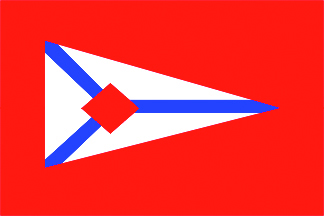
![]() Francis William Harris and James Dixon began to build up steam colliers from 1863 to operate in the North East Coast coal trade to the Thames both being, active on the Coal Exchange in London. As shipbrokers they could claim to be the oldest in the City with charter parties in their archives dating back to 1797 and 1813. Colliers included Hastings of 1864, Bwllfa of 1865, Merthyr of 1866, Fulmar of 1868, Lloyds of 1869 and Mid-Surrey of 1870. The total of their fleets numbered over a dozen colliers by 1873, the year in which Bwllfa, named after a South Wales colliery, was the first ship to be registered under the ownership of Harris, Dixon & Company. Later ships such as Richmond of 1871 and Wimbledon of 1872 were by then expanding their horizons by taking coal from the Tyne to Gibraltar and Mediterranean ports and from Cardiff to Black Sea ports and returning with grain from the Black Sea on the ‘Eternal Triangle’ route.
Francis William Harris and James Dixon began to build up steam colliers from 1863 to operate in the North East Coast coal trade to the Thames both being, active on the Coal Exchange in London. As shipbrokers they could claim to be the oldest in the City with charter parties in their archives dating back to 1797 and 1813. Colliers included Hastings of 1864, Bwllfa of 1865, Merthyr of 1866, Fulmar of 1868, Lloyds of 1869 and Mid-Surrey of 1870. The total of their fleets numbered over a dozen colliers by 1873, the year in which Bwllfa, named after a South Wales colliery, was the first ship to be registered under the ownership of Harris, Dixon & Company. Later ships such as Richmond of 1871 and Wimbledon of 1872 were by then expanding their horizons by taking coal from the Tyne to Gibraltar and Mediterranean ports and from Cardiff to Black Sea ports and returning with grain from the Black Sea on the ‘Eternal Triangle’ route.
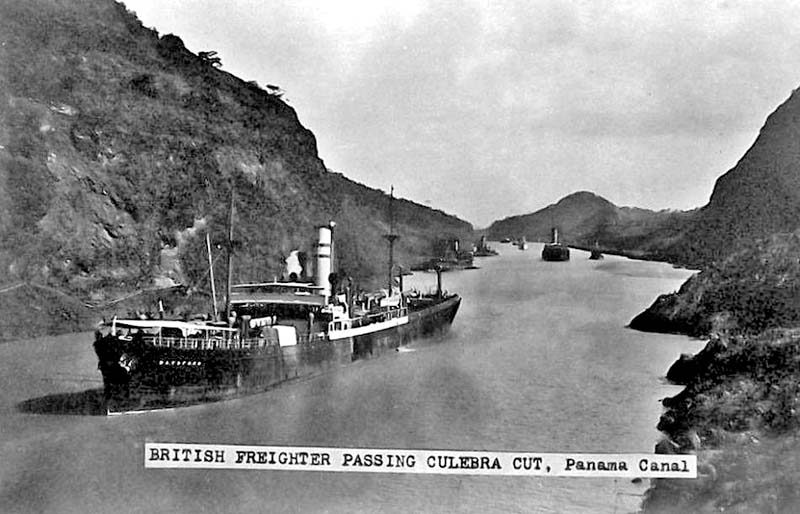
Larger tramps such as Joseph Pease of 1876 and F. W. Harris of 1877 completed to the order of Dixon & Harris at Stockton, but the partnership names had been reversed to Harris & Dixon by the time Navigation of 1879 and Northern of 1880 were completed at Palmer’s yard at Jarrow. They were owned on the 64ths system. Francis W. Harris having 12 shares, E. Harris 2 shares, and James Dixon 13 shares in each ship, with the rest of the shareholders residing in London, Norfolk, Gloucester, Devonport and elsewhere. Three marine losses were suffered during 1878 in Richmond, Joseph Pease and F. W. Harris. The partners’ first new steel tramp Shagbrook of 1884 was completed in October of that year by William Gray at Hartlepool. By this time only a couple of colliers were still engaged on the coal trade into the Thames with only Mid-Surrey left in the 1890s and she was exceptional in that she completed 50 years service with the fleet before being sold for scrap in 1920. New larger tramps were then ordered to participate in world-wide trading to the Middle East and Far East, Pacific, and from the U.S. Gulf and U.S. Eastern seaboard to U.K./Continent with timber, grain and cotton. They were completed for the ownership of one-ship limited liability companies taken from the name of the ship, e.g. Elvaston of 1887, Cheniston of Wakefield of 1888, Collingham of 1889, Courtfield of 1893 and Brinkburn of 1894.
The Century Steamship Co. Ltd. was set-up just before the advent of the new century to own Brinkburn of 1899 launched by Helen Turnbull and completed in July that year at the Turnbull yard in Whitby. Brinkburn sailed on her maiden voyage to Madagascar on charter to the French Government with a cargo of shallow draft boats to quell a revolt on the island. Harris & Dixon owned shares in all of the Turnbull tramps in their Whitby, Cardiff and London fleets, and also acted as insurance agents and chartering agents for Turnbull.
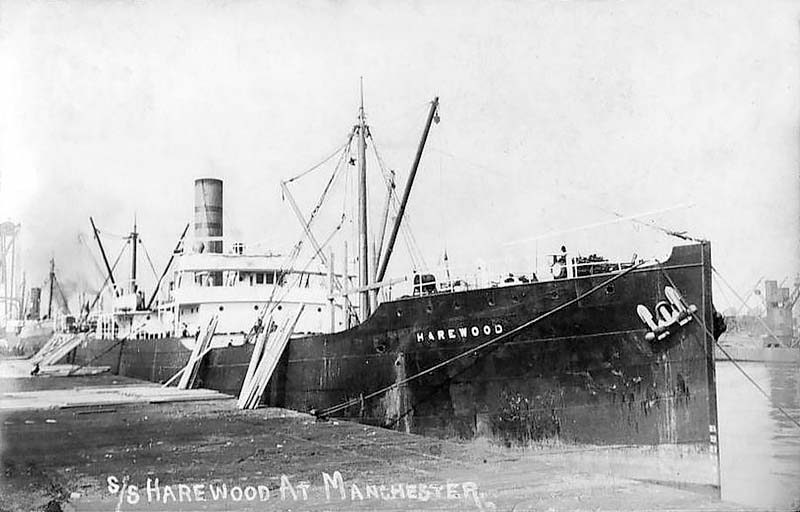
The 4,150grt Harewood was built in 1913 by J.L. Thompson at North Sands. On 13th April 1918 she was scuttled by U-155 380nm SW of Lisbon with the loss of two crew members.
Three more tramp owning companies were soon set-up as the Cornhill Steamship Co. Ltd. in 1904, the Gracechurch Steamship Co. Ltd. in 1905 and the Alliance Steamship Co. Ltd. in 1906. Twenty new and second-hand tramps were purchased and registered under these four companies between the tum of the century and 1908, and Harris & Dixon was made into a company of limited liability on 28th December 1902. The Gracechurch company, taken from the address of the company in London, was to have the greatest longevity, with Harris & Dixon registering ships under that company for the next fifty years. Five tramps were purchased at this time from the liquidators of the Heath Line of London, freight rates remaining in slump until 1908. A fleet of eighteen tramps was being traded in 1910 to participate in the better freight rates for e.g. coal out to Newport News, returning with timber from British Columbia or sugar from Java or general cargo from Hong Kong. Ten large tramps were completed by the J. L. Thompson yard at Sunderland for the company between 1909 and 1914, the largest being able to carry over 7,000 tons of cargo. They were named as Brinkburn (3), Wakefield (2), Collingharn (2), Northern (2), Southern, Cheniston (2), Elvaston (3), Mottisfont, Harewood (2) and Batsford.
World War I
Sixteen tramps were owned by the company at the outbreak of World War I, with two lost to torpedoes and shells from U-boats:-
- 8.6.1917 Saragossa – Torpedoed/sunk in the Atlantic 178m NW of Fastnet o. v. Cuba and Halifax (NS) to Queenstown with sugar.
- 13.4.1918 Harewood – Sunk by gunfire in the Atlantic 380m SW of Lisbon o.v. New York to Gibraltar with general cargo. 2 lost including the Master.
In addition, Carnlake which had earlier been in the fleet as Wandsworth was lost by stranding on 17th August 1917. Four large new tramps were completed for the company by Sunderland yards during the war as Southern (2), Mottisfont (2), Holbrook, and Dunbridge. Lord Strathcona, completed for John Herron & Company, was purchased in December 1916 for the Canadian trades. This quintet and many of the company’s other tramps were requisitioned as Admiralty colliers, or expeditionary force supply ships from Canada/U.S.A. to France, or to bring urgently required wheat from the Plate and nitrates from Chile to the U.K. Further replacements came from purchased tramps such as Wooda of 1901, but many ships were sold off for the better prices obtained during the war years. Four were sold to Canadian Pacific Steamships during 1917/18 mostly without change of name as Heliopolis, Mottisfont, Holbrook and Dunbridge. Heliopolis had initially been purchased by the Admiralty in March 1913 for conversion to a hospital ship and was renamed Maine (2) in July 1914 but her speed was insufficient for her new use and she reverted to Harris & Dixon Ltd. in March 1916.
Inter-War Years
A fleet of four tramps together with five managed former German prizes, some of which had been captured at the start of the war and a Uruguayan steamer were being operated in the post-war boom conditions of 1919/20. However freight rates were in severe slump by the end of 1920 and this fleet had to be quickly sold off. New trades and more fuel efficient ships were needed for these harsh trading conditions and orders were placed for a new motor-tramp and for two tankers to make an entry into the oil and molasses trades for the first time.
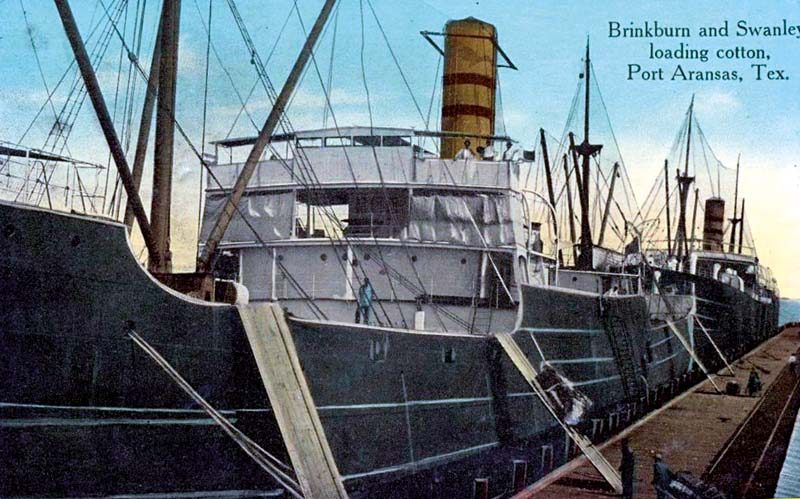
The first tanker was completed as La Crescenta of 9,000 dwt by the Furness, Withy yard at Hartlepool for the Crescent Navigation Co. Ltd. with bridge amidships and engines aft. A red crescent was placed between the two red bands on her yellow funnel to represent this company. She was completed in 1923 and often carried molasses on charter to the British Molasses Company and the United Molasses Co. Ltd. (Athel Line) and was the first tanker to unload molasses at the new facilities opened at Birkenhead in November 1925. She was then on charter to Shell for Far East trading out of Singapore. She was laid-up at Milford Haven during 1931/33, but was reactivated for a Pacific charter and she sailed from Port San Luis, California on 24th November 1934 with oil for Osaka, but disappeared to the NW of Hawaii on 5th December after having exchanged signals with Athelviscount earlier on that day. The end for her crew of 29 must have been sudden for no distress signals were sent out, and a large oil slick two miles long was later found. The second tanker Cynthiana of 5,000 dwt was completed by the Monmouth Shipbuilding Co. Ltd. in 1923 for Furness, Withy & Co. Ltd. and was purchased by the company soon after completion.
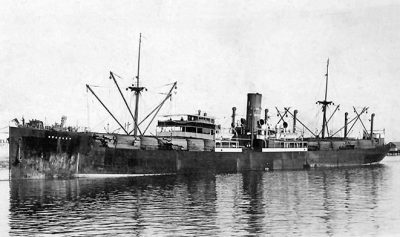
The motor tramp was completed as Swanley in June 1924 at the Barclay, Curle yard on the Clyde at a cost of £110,000 and equipped with a 3-cylinder Maclagan oil engine from the North British Diesel Engine Works, Glasgow. She was jointly-owned by Harris & Dixon Ltd. and Swan, Hunter & Wigham Richardson Ltd. (owners of Barclay, Curle) and after repeated engine failures in service, she was re-engined in 1927 with a Barclay, Curle-Doxford oil engine. She gave five more good years of service before being transferred to the Hopemount Shipping Co. Ltd. of Newcastle, owned by Swan, Hunter & Wigham Richardson Ltd., by whom she was then wholly owned. Her sister was City of Stockholm completed by the same yard in 1925 for Ellerman Lines, and she also went through a change of engine before ending up in the Hopemount fleet in 1932. Neptunian of 1925 was another motortramp completed by Swan, Hunter at this time but she was managed by W. A. Souter & Co. Ltd. of Newcastle. Another was Iossifoglu renamed Titanian in 1927.
The directors of Harris & Dixon in the 1920s included William Holford Dixon, Sir Frederick Lewis, Chairman of Furness, Withy & Co. Ltd., Sir John Esplen, a Liverpool shipowner and founder of the Hadley Shipping Co. Ltd. in 1926 and who died of cancer in January 1930 aged 66 years and 1st Viscount Wimborne (1873-1939) whose mother was a daughter of 7th Duke of Marlborough. He served with the Army during the Boer and Great Wars. There were seven other directors.
They sanctioned the order for the small tanker Freshmoor of 1,500 dwt from William Doxford & Sons Ltd., which was completed in September 1928 at Pallion equipped with the first three-cylinder version of the Doxford oil engine, which was later to power the famous Doxford Economy motor-tramp designed during the depression of the 1930s. Freshmoor was sold in 1936 to A. C. Lensen and renamed Foss Beck, and was to sail on under the Greek and Egyptian flags in a 55-year career until lost at Ras-el-Hekma on the Egyptian coast in January 1983.
The fleet had almost ceased to exist by the end of the depression in 1936, but the former American tanker Gulflight built for Gulf Oil in 1914 by the New York Shipbuilding Co Inc. at Camden was purchased in 1938 and renamed Refast. She was joined a year later by an equally old tanker in Esturia, which had been built at Sunderland in 1914 as La Habra for Wilhelmsen of Norway. Another old ship Kaolack was also owned at the outbreak of war in September 1939 and had been laid-up for most of the depression years in the Tyne. Two old coasters, each of 400 grt, Harley and Dixley, were also owned at this time by the Harris & Dixon Steamship Co. Ltd. from the same address in Gracechurch Street but under the management of John E. P. Hocken for coastal trading.

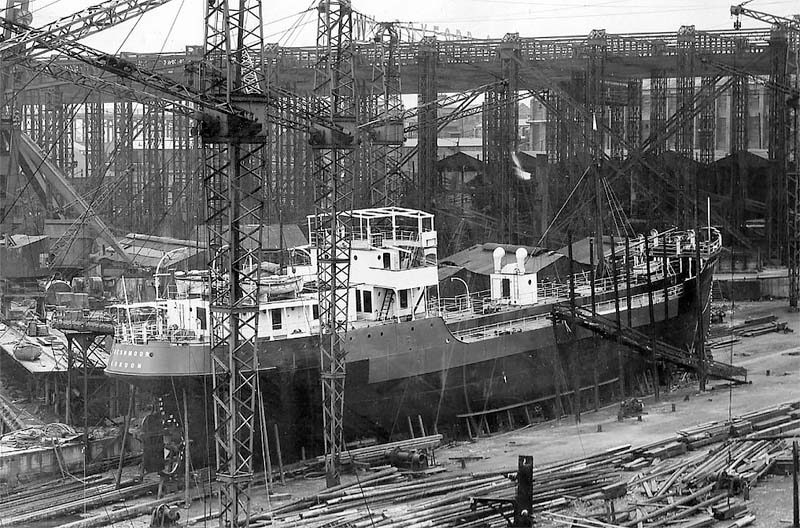
In 1943 the Ropner tramp Rudby of 1924 was purchased and registered under the Cassar Co. Ltd. of Malta with Harris & Dixon as managers. In 1946 she was renamed Knight Templar and joined the twin-funnelled Maltese coastal passenger ship Knight of Malta 1,553grt/ 1929 of that company. The Knight of Malta was built by Swan, Hunter & Wigham Richardson Ltd. for coastal service between Malta and Sicily. She had accommodation for 63 first-class passengers and 46 second-class passengers as well as the provision of seats for those travelling without accommodation. On the outbreak of war, she was used as an Armed Boarding Vessel and a Naval Store Carrier and was sunk by enemy action off Libya in March 1941.
Harris & Dixon Ltd. managed ships for the Ministry of War Transport including the standard ‘Norwegian’ type tanker Empire Lytton. This tanker was torpedoed and sunk in the supply convoy TMl from Trinidad prior to Operation Torch, the landings in North Africa.
Post World War II
After the end of the war, Harris & Dixon Ltd. abandoned tramping and went into the Mediterranean liner trades. Charles H. Edmonds was now Managing Director, and the other directors included 2nd Viscount Wimborne (1903-1967) who had seen Army service during 1939-1943 and was Under-Secretary for Air during 1943-1945.
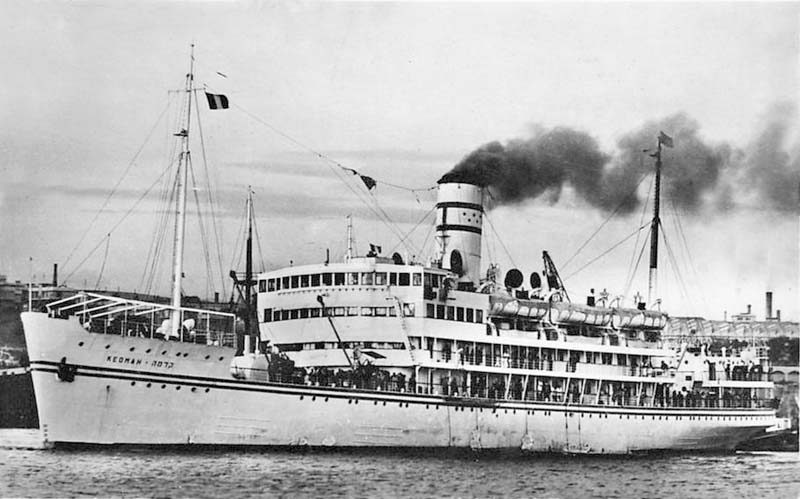
Another director was Lord Kilmarnock (1903-1975) who was born in Scotland as the youngest son of 21st Earl of Erroll. He served in the Army during the North African campaign 1943-1944, was mentioned in despatches and awarded the MBE for bravery. He was Assistant Military Secretary to Supreme Allied C-in-C (Mediterranean) in 1945, and then served in Palestine during 1947-1948.
He was the representative in Palestine for the Kedem Palestine Line, a subsidiary of the newly-formed Zim Line.
Zim’s first passenger ship was Kedmah which had been built as Kedah for the Singapore to Penang and Belawan service of the Straits Steamship Co. Ltd. in 1927 by Vickers at Barrow-in-Furness. She was managed for Zim by Harris & Dixon Ltd., along with their first four cargo ships including the Shorts built Hadar 2,574grt/1949.
Kedmah was used on a Marseilles-Piraeus-Cyprus-Beirut-Israel service by Zim, and was purchased by Harris & Dixon Ltd. in 1952 and renamed Golden Isles for their Sterling Line service between Marseilles-Malta-Cyprus-Beirut. On her first voyage as Golden Isles she brought back to Marseilles the entire crew of the Messageries Maritimes liner Champollion which had been wrecked in Beirut harbour on 22nd December 1952. She then spent a further two years on Zim Line charter in 1954/55 on the Marseilles to Haifa run and was sold for breaking up in 1956.
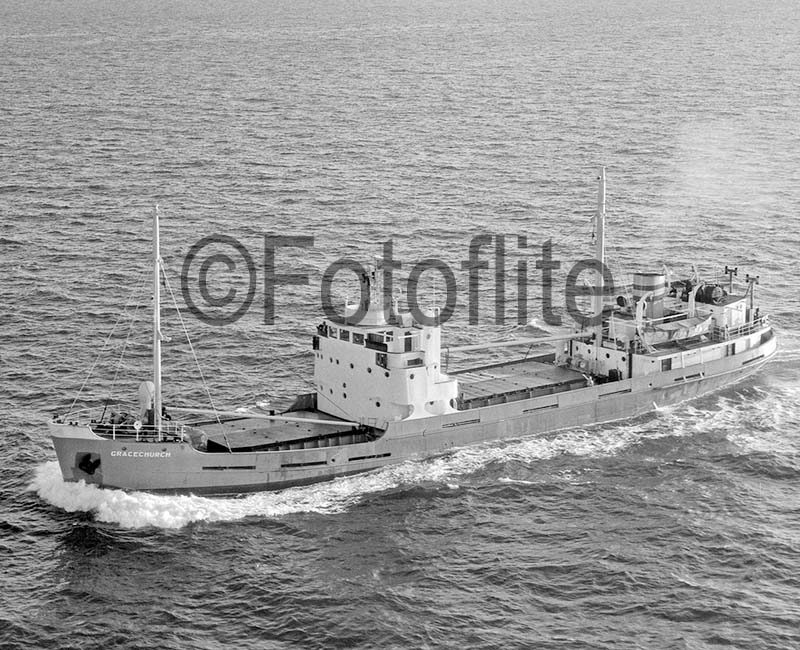
The company had a capitalisation of £320,000 in 1950 made up almost equally of preference and ordinary shares and took delivery of a new refrigerated coaster of 1,164 dwt in 1952 named Gracechurch from the Charles Hill yard in Bristol. She was built for a service between London, Rotterdam, Bristol Channel ports and Barcelona, Genoa, Naples, Messina and Catania in Sicily, Malta, Algiers, Venice, Trieste, Tripoli, Benghazi, Piraeus, Beirut and Haifa. Citrus fruit in season was a regular homeward cargo, and she was operated under the famous Golden Cross Line, a former defunct Welsh company dating from July 1906 when set up by Owen and Watkin Williams of Cardiff, and purchased in 1953 from the joint ownership of Turnbull, Scott & Co. Ltd. and Charles Hill & Sons Ltd. of Bristol.
Final Years
The service name was changed to the Gracechurch Line by the late 1950s when it was sold by Harris & Dixon Ltd. to Constantine Lines of Middlesbrough. However it was soon brought back into Harris & Dixon Ltd. ownership but registered under the Coquet Shipping Co. Ltd. and managed by Anthony & Bainbridge Ltd. of Newcastle, the managers being a subsidiary of Harris & Dixon Ltd.
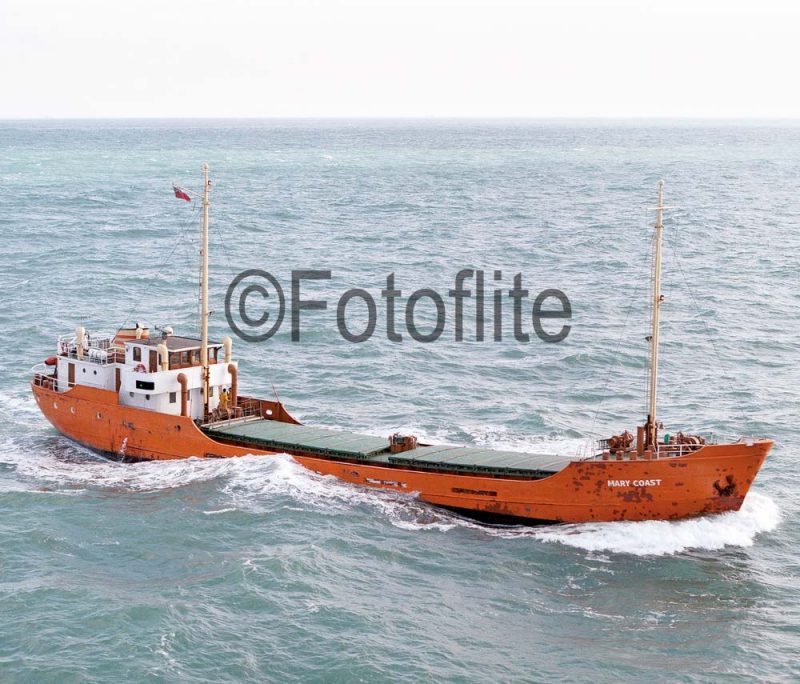
Gracechurch was transferred to the ownership of Anthony & Bainbridge Ltd., and continued trading to the Mediterr-anean until sold in 1967 to Canadian owners and was wrecked in the Strait of Canso during 1971. Lord Kilmarnock served as Chairman of the company from 1967 to 1972, having been Vice-Chairman of the Baltic Exchange from 1963-1965 and its Chairman during 1965-1967. He had also been President of the Institute of Chartered Shipbrokers during 1959-1962, and Chief of the Scottish Clans in 1962. He retired in 1972 and died later on 15th May 1975.
After the sale of Gracechurch, Harris & Dixon Ltd continued in business as shipbrokers and insurance agents until well after the Millennium.
A coaster was purchased in 1985 and renamed Mary Coast and was given traditional Harris & Dixon colours until sold to Derick Goubert of Guernsey in 1986.
Gracechurch Line continues to sail today for other British owners to the Mediterranean as a liner service, the ships having been managed by Salvesen during the 1970s, and currently uses chartered German-owned tonnage.

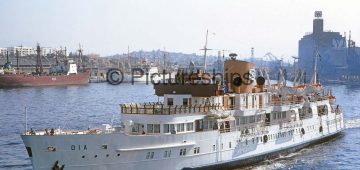



Comments
Sorry, comments are closed for this item